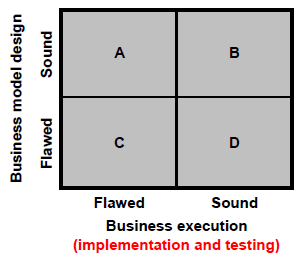It may be helpful to illustrate the concept of business models with two examples, McDonalds and CEMEX. In the case of McDonalds, it operates franchises all over the world. Franchises are proven and successful business models whose business model “prescription" is successful within the country of origin and even overseas. Dominating the hamburger fast food market, McDonalds’ franchise model has also proven to be successful since it quickly adapts and evolves according to the environment. For example, McDonalds USA does not have hot sauces, but in Mexico where Mexicans like a lot of spicy food, they offer hot sauce, as well as spicy meat put into the hamburgers. Another successful example is the Mexican cement maker CEMEX (the world’s third largest producer of cement) that has successfully implemented and tested a standard business model called the “CEMEX Way” in all the plants and business units it has within more than 50 countries around the world. Considering it operates in four different continents, except Oceania, with very different cultures and ways of thinking; countries such as the US vs Thailand, or Italy vs Bangladesh; it allows CEMEX to have a very quick response mechanism to adjust to the market demands since it has a standard operational platform. This gives CEMEX a clear competitive advantage against its main rival giants such as Holcim and Lafarge.
Having established what a business model is, it is important to separate it from the design of a model actually implementing it, i.e. testing it and putting it into practice. The design is best defined as the strategy. If a business model design is not well outlined; the implementation and testing will also fail. Taking a very simple framework from Alexander Osterwalder (Business Model Design Blogpost, June, 2006) shown in Figure 3.1, business model design is separated from business model execution, preceded, of course, by business execution implementation and testing. Companies in quadrant “B” with sound business model designs and effective execution are successful companies, and they must focus on staying in that quadrant. Companies in quadrant “C” need to re-examine their business vision and strategy, while companies in quadrant “D” do not have a good design but are effective on its implementation; this latter usually happens with the appearance of disruptive technologies that “shake up” established industries and business models much the way iTunes and the iPod did. It is very common for companies to have a sound business model design but fail to implement and test it properly (quadrant “A”).

If we seek to have a successful test result from a business model it is mandatory to have a clear vision as well as a sound business model design. The rest is a matter of testing and implementations, or “execution” as it is often called. Still, successful execution is sometimes the most difficult task of all.
The focus of the balance of this section will be to review the main issues companies must consider in order to successfully implement and test a business model.
- 3874 reads






